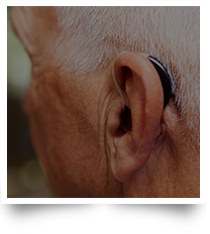Nose & Sinus Services
Snoring & Sleep Apnea
People with sleep apnea stop breathing while they sleep, sometimes hundreds of times per night, and sometimes for a minute or longer. Sleep apnea affects about 18 million people of all ages in the U.S. and takes three forms: obstructive, central and mixed. Obstructive sleep apnea (OSA), the most common form, occurs when the soft tissue at the back of the throat closes, blocking (obstructing) the person’s airway. The airway remains open in central sleep apnea, but the brain does not send signals to the muscles involved in breathing. Mixed sleep apnea combines aspects of the obstructive and central types. A common warning sign of sleep apnea is snoring (especially snoring interspersed with gasps or lack of breathing) although it is not always as a result of sleep apnea.
Because sufferers are roused from sleep briefly to resume proper breathing, disrupting and lowering the quality of a person’s rest, sleep apnea can cause a number of problems. If left untreated, it can result in high blood pressure, cardiovascular disease, stroke, memory problems, weight gain, impotency, headaches, and daytime fatigue leading to job impairment and motor vehicle crashes.
There are a variety of treatments available for sleep apnea, including oral appliance therapy, mandibular repositioning and tongue-retaining devices, nasal sprays, traditional surgery, laser-assisted uvulopalatopharyngoplasty and nasal surgery. If you think you are suffering from sleep apnea, talk with your doctor. He or she will discuss which treatment is right for you.
Nasal Deformity
Deformities of the nasal cavity may occur as a result of a congenital defect, traumatic injury or medical condition that can lead to an abnormal appearance, as well as symptoms like nasal obstruction, frequent nosebleeds and difficulty speaking or eating. These deformities may include problems caused by a cleft lip or palate, a deviated or perforated septum or a mass on the nose and are often present at birth.
Treatment of a nasal deformity depends on the type and severity of the condition, as well as the patient’s age, overall health and expected outcome. Deformities that are purely cosmetic may not require treatment unless desired by the patient. Surgery is most often performed to correct any physical disfigurement and restore function to the nose and airway, and may include skin and tissue grafts, which can be taken from another area of the body or from a donor. Other patients may benefit from surgical repair of fractures or an opening of the passageway to allow for proper breathing.
Your doctor will determine which type of treatment is best for you after a thorough evaluation of your individual condition. Treatment is most effective when performed by an experienced doctor, especially for deformities in infants and young children. These patients require special care to ensure proper growth and development after correction. Our doctors are highly experienced in the comprehensive treatment of nasal deformities in patients of all ages.







